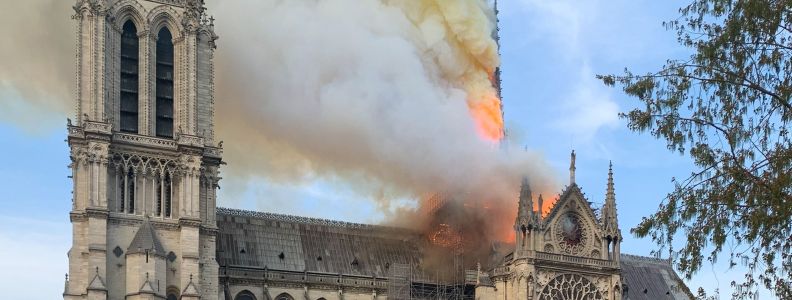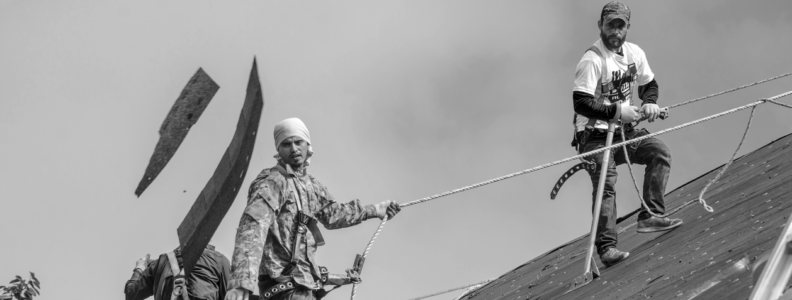Blog

Yes, Your Building Will Burn
“What, this building? It’s made of (some material other than wood). It’ll never burn!”
This is a statement I’ve heard more than a few times. Let’s just say that if I had a nickel every time I heard this type of remark I’d have at least two dollars by now.
I’m here to tell you that your building – even though it’s not made of wood – will burn.
First off, I know, I’m an insurance agent that depends on people buying insurance policies from me to make a living. You see right through me and you know where my biases are. I’m just trying to sell you something. Yes, you are correct that I do need to sell policies to feed my family, but in this case, I really don’t care about that. In fact, I ask that you don’t call me. I’m already all booked up right now. If this post moves you, call your current agent. What I care more about than selling a policy is exposing the truth and dispelling falsities. Maybe I’m a bad business man. I don’t care.
So; one thing that drives me nuts is when I hear the same wrong thing stated more than once. Yes, I get it: buildings made of concrete tilt up, brick, block, stone, and metal are all less likely to burn than wood (which is why the insurance rates for those buildings are lower). And I also understand that most buildings will never get near a fire. It is only a small portion of buildings that ever suffer any sort of fire damage. But I plead: let’s not delude ourselves into thinking that just because your building is not made of wood that it’s somehow fireproof.
Anyone heard of the Great Fire of London of 1666? The Great Fire of Chicago of 1871? The fire that followed and caused most of the damage to San Francisco after the Great Earthquake of San Francisco of 1906? In either three of those incidences were there any mentions that the fire only burned only the wood buildings and just crept around the brick, block, or stone ones leaving them undamaged? No! Of course not because it didn’t happen. They all went down. 70,000 homes and 88 churches (including the massive Old St Paul’s Cathedral) were burned in London. 17,500 buildings were burned in Chicago, and another 25,000 buildings went down in San Francisco. It is estimated that the fire reached 2282 degrees in London which is, by the way, hotter than molten lava.
“OK,” you’re saying, “three big fires in 400 years. Big deal. MY building won’t burn.” Agreed, it probably won’t. But let’s not pretend it can’t.
Assuming that another Great Fire of ______________ of 20__ doesn’t sweep through your part of town, here’s what can happen to your concrete tilt up, brick, block, stone, or metal building even if it doesn’t actually burn to the ground.
One – it can warp or melt. This is more likely to happen to a metal frame building than a tilt up, block, brick or stone building. Your building does not have to come into direct contact with flames for this to happen. Let’s say you have a bunch of plastic items in your building that catch on fire. Plastic burns really hot and the flames from the plastic can warp or melt your metal building even if the flame never touches your walls. No it didn’t burn down, but the cost is the same to you as if it did: you will have to replace the melted or warped parts of the building with new parts. That can be expensive!
Two – it can become brittle. This is more common with a concrete tilt up, brick, block, or stone building. Yes, it may not actually burn to the ground like Old St Paul’s Cathedral (which was made of stone) in London in 1666 but it can become brittle enough to where you might not trust the structural integrity of it any longer. Maybe the bricks, blocks, or stones endure the fire un-phased, but it’s the mortar in between them that weakens. What would the cost be to remove each brick and install new mortar? I imagine: pricey.
Three – it can get smoke damage. This is probably the most insidious threat of them all. Let’s say you have, like in the first example, a bunch of plastic items in your building that burn up, but don’t actually do any structural damage to the building. But you have smoke stains everywhere. All over the ceiling, walls, and the rest of your stuff in the building. What is the cost to clean that up? This is one of the main reasons insurance companies require a building to be 1000 feet or more from a wildfire zone. They’re not worried so much about the actual fire damage: they don’t want to pay to clean up the smoke damage.
Again, I’m not trying to scare you into buying insurance for your building. Since I only insure a few niche industries, if you called for a quote on your commercial building, there’s a good chance I couldn’t help you anyway. I don’t want you to have insurance if you don’t want insurance. I respect your right to live uninsured. I’m only telling you this because I care about you too much to let you believe the lie that is just because your building isn’t made of wood that it can’t burn. It most certainly can and given the right conditions, it most certainly will and the damage can cost you a lot of money. None of us like to be blindsided. Believing that your building can’t burn only to find one day that it did burn will blindside you, and that would make me sad. I want less sadness in this world. So you could also say I’m also trying to increase joy. You’re welcome.
 ELI GILLESPIE
ELI GILLESPIE
I’m the commercial producer and owner at Gillespie Insurance Services.
SCHEDULE A CALL
SEND EMAIL





